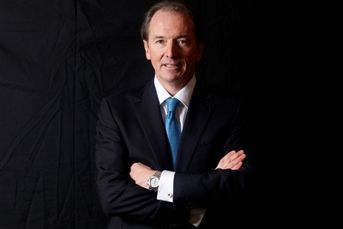Morgan Stanley unrecognizable after makeover
Wall Street, your industry has a new visionary: James Gorman, the 54-year-old Australian-born chief executive of Morgan Stanley.
Wall Street, your industry has a new visionary: James Gorman, the 54-year-old Australian-born chief executive of Morgan Stanley.
Yes, other Wall Street bigwigs such as Lloyd Blankfein at The Goldman Sachs Group Inc. and Jamie Dimon at JPMorgan Chase & Co. get more attention. But Mr. Gorman stands out because he has chosen a tack opposite to that of leaders at other major global financial services companies, who are still hopeful that the status quo on Wall Street will be resurrected by the time the rest of the new Dodd-Frank rules and regulations get written next year.
“We are unambiguously business-not-as-usual and have dramatically changed the shape of our firm,” he told the Financial Times this month.
Once upon a time in 2008, Morgan Stanley, under chief executive John Mack, was virtually indistinguishable from its archrival Goldman Sachs and was in many of the same lines of business as Lehman Brothers Holdings Inc., Merrill Lynch & Co. Inc. and The Bear Stearns Cos. Inc. In less than three years, Mr. Gorman has transformed the place.
“This is a firm that had a tiny wealth management business a few years ago, had underinvested in fixed income, had underinvested in infrastructure, ran a hedge fund that was unprofitable … We had a lot of problems and were doing a lot of swings for the fences in the merchant bank,” he said. “We’ve cleared all that stuff out.”
Mr. Gorman has decided that rather than hope for a revival of the glory days when return on equity was more than 20%, the time has come to refashion the firm into a lower-risk, presumably far safer enterprise that helps companies raise capital whenever and wherever they need it around the globe, provides them with advice on mergers and acquisitions, and offers institutions and individuals wealth management expertise.
He is focused on getting Morgan Stanley’s return on capital up to 10%, from a paltry 5%.
Mr. Gorman said that this task is “much more interesting” than getting back to the higher returns from the old days, which turned out to be “completely flawed anyway” because the billions of dollars in profits disappeared in huge write-offs during the financial crisis.
In his quest to reduce risk, he has decided to focus on lower-beta, fee-generating businesses. In buying what used to be called Smith Barney Inc. from Citigroup Inc., Mr. Gorman has placed a multibillion-dollar bet on the retail-brokerage business.
Morgan Stanley now has about 15,000 brokers, second only to the Merrill Lynch subsidiary of Bank of America Corp. Mr. Gorman used to run the brokerage business at Merrill before Mr. Mack recruited him for Morgan Stanley in 2006.
Mr. Gorman isn’t junking the firm’s institutional trading business. But the days are gone when a single trader at Morgan Stanley could cost the firm $9 billion and almost send it into oblivion, as Howard Hubler did in 2007.
Mr. Gorman isn’t waiting around to see what the final standards of the Volcker rule will allow or won’t allow when it comes to proprietary trading.
“We don’t do prop trading. We wouldn’t allow it,” Mr. Gorman said.
“We don’t have treasury functions that run as little hedge funds,” he said, an unsubtle swipe at JPMorgan Chase and the $5.8 billion trading loss that it suffered recently because of bad derivatives bets by a trader.
LONELY CRUSADE
Another item on the agenda is the idea of scaling back Wall Street’s compensation system, which encourages bankers and traders to take big risks with other people’s money.
Last year, Mr. Gorman capped cash bonuses at the firm at $125,000, reduced pay by about 25% and deferred large portions of the bonuses that were awarded.
“If you’re really unhappy, just leave,” he said.
Mr. Gorman seems to be the only Wall Street executive willing to say publicly that pay must come down if the big banks are serious about their fiduciary responsibility to shareholders. Pay is, after all, the largest variable cost on Wall Street, often reaching 50% or more of revenue.
To be sure, the jury of shareholders is still out: Morgan Stanley’s stock is trading at about $17.50, down from $21 a share in March.
Mr. Gorman’s strategic moves are enough to convince financial industry research analyst Mike Mayo of Crédit Agricole SA to recommend Morgan Stanley’s stock for the first time in years.
For Morgan Stanley to return to its glory days, margins need to be improved in asset management, fixed-income trading needs to be further slimmed down and the core investment-banking franchise needs to be maintained and reinvigorated, he wrote in an e-mail.
William D. Cohan, author of “Money and Power: How Goldman Sachs Came to Rule the World” (Doubleday, 2011), is a Bloomberg View columnist.
Learn more about reprints and licensing for this article.




